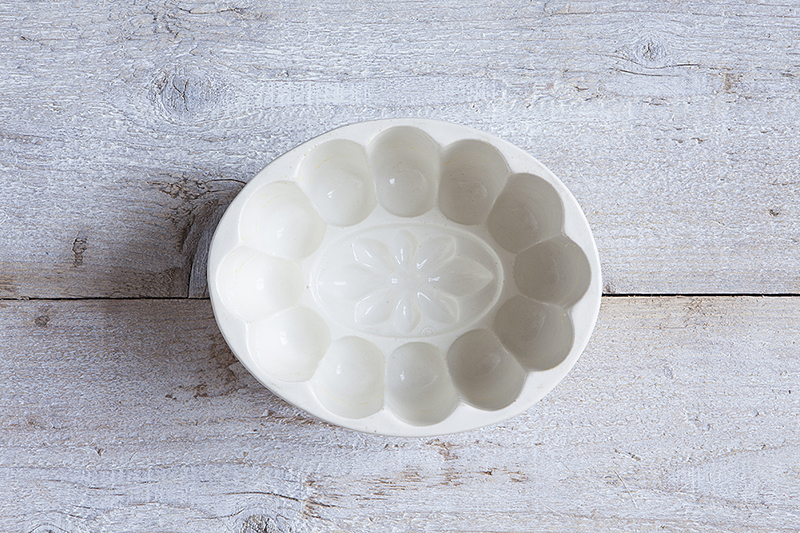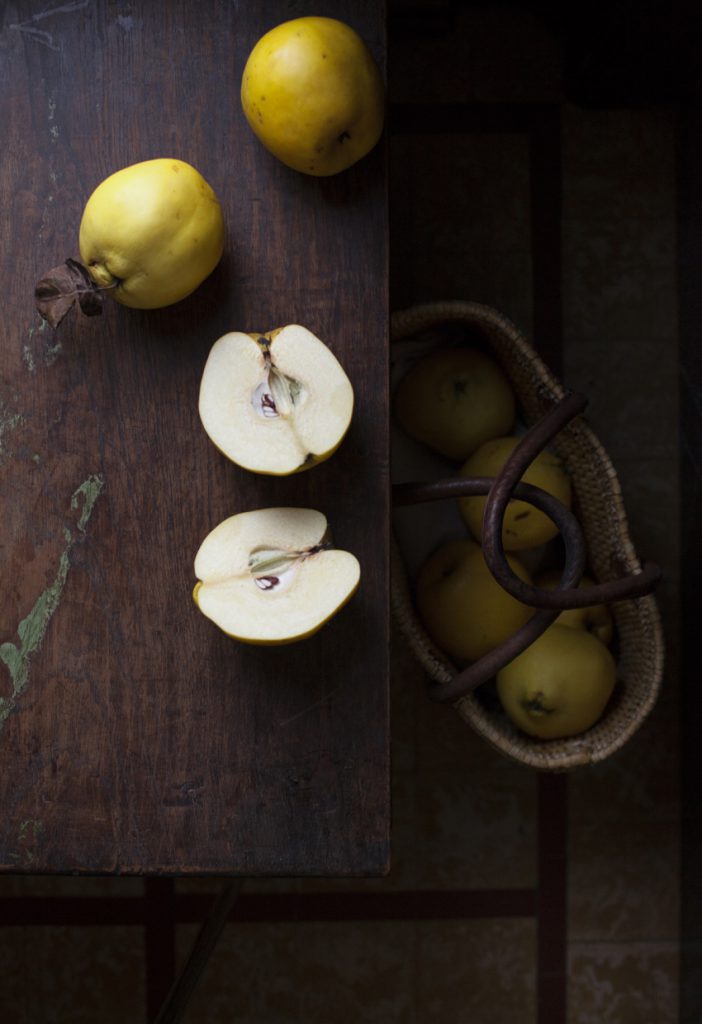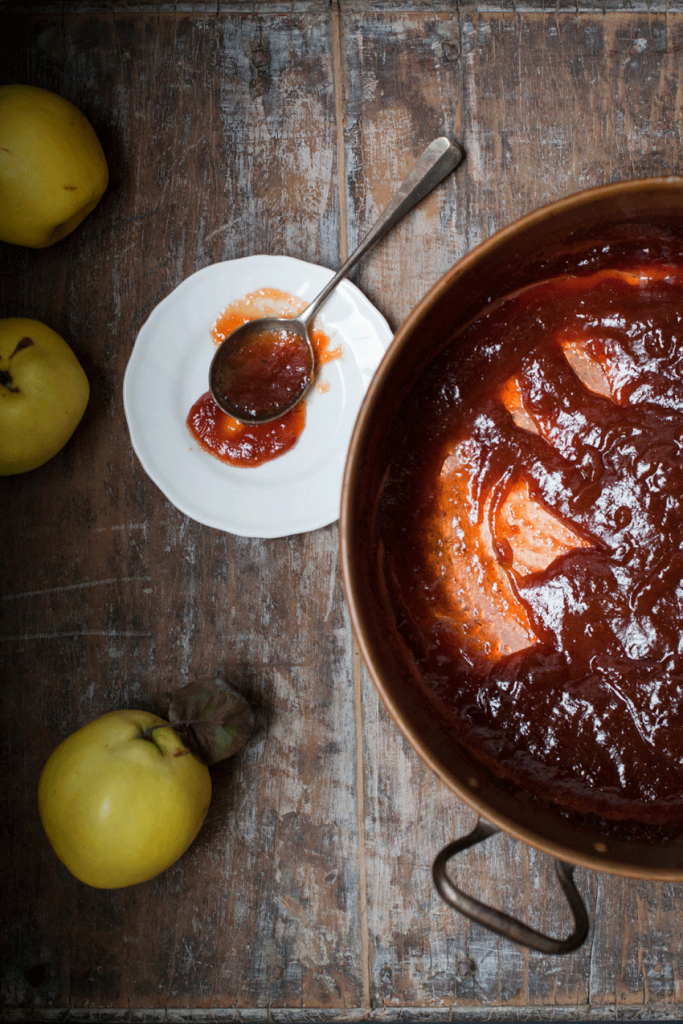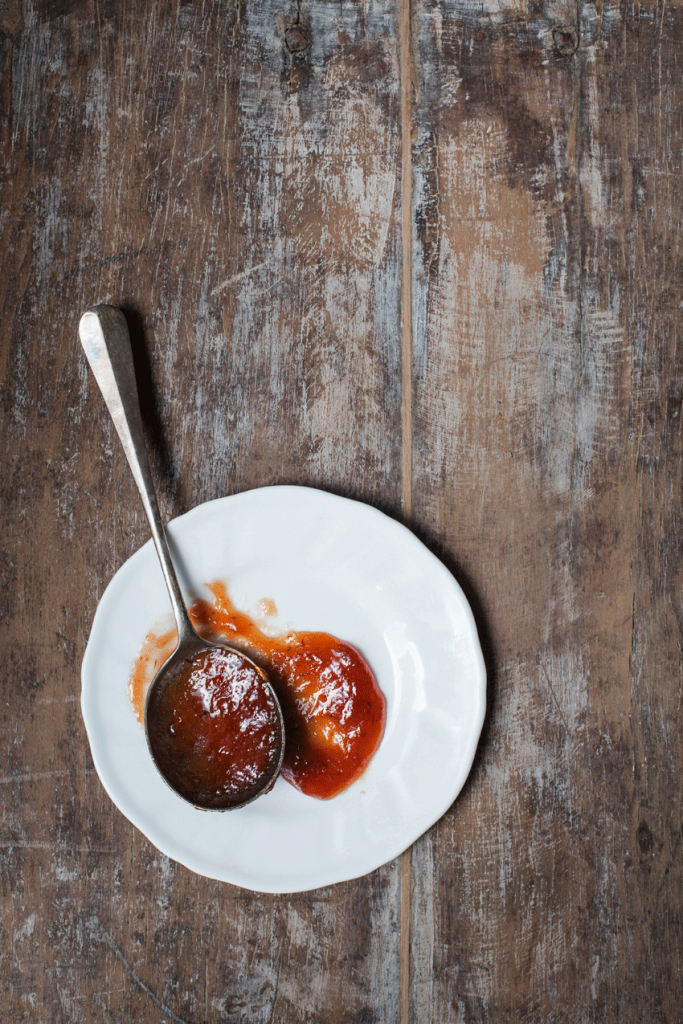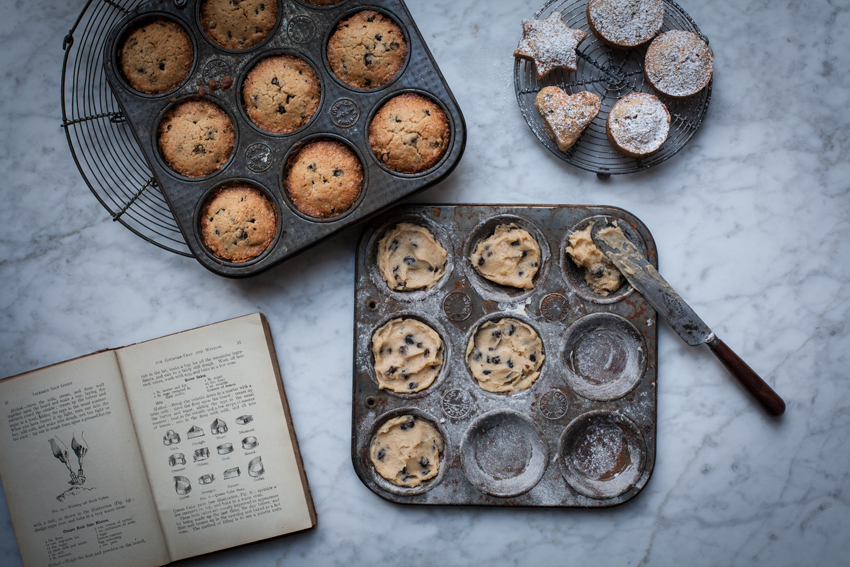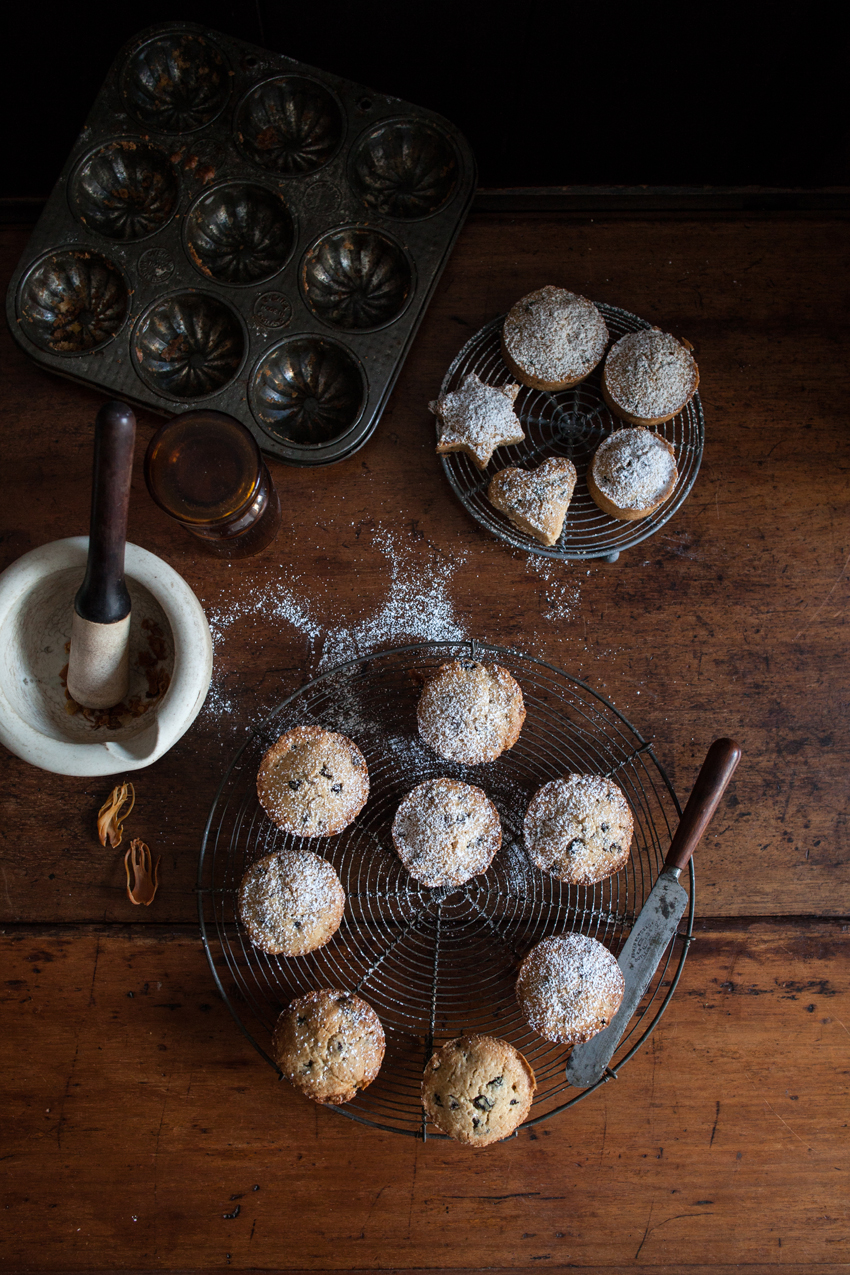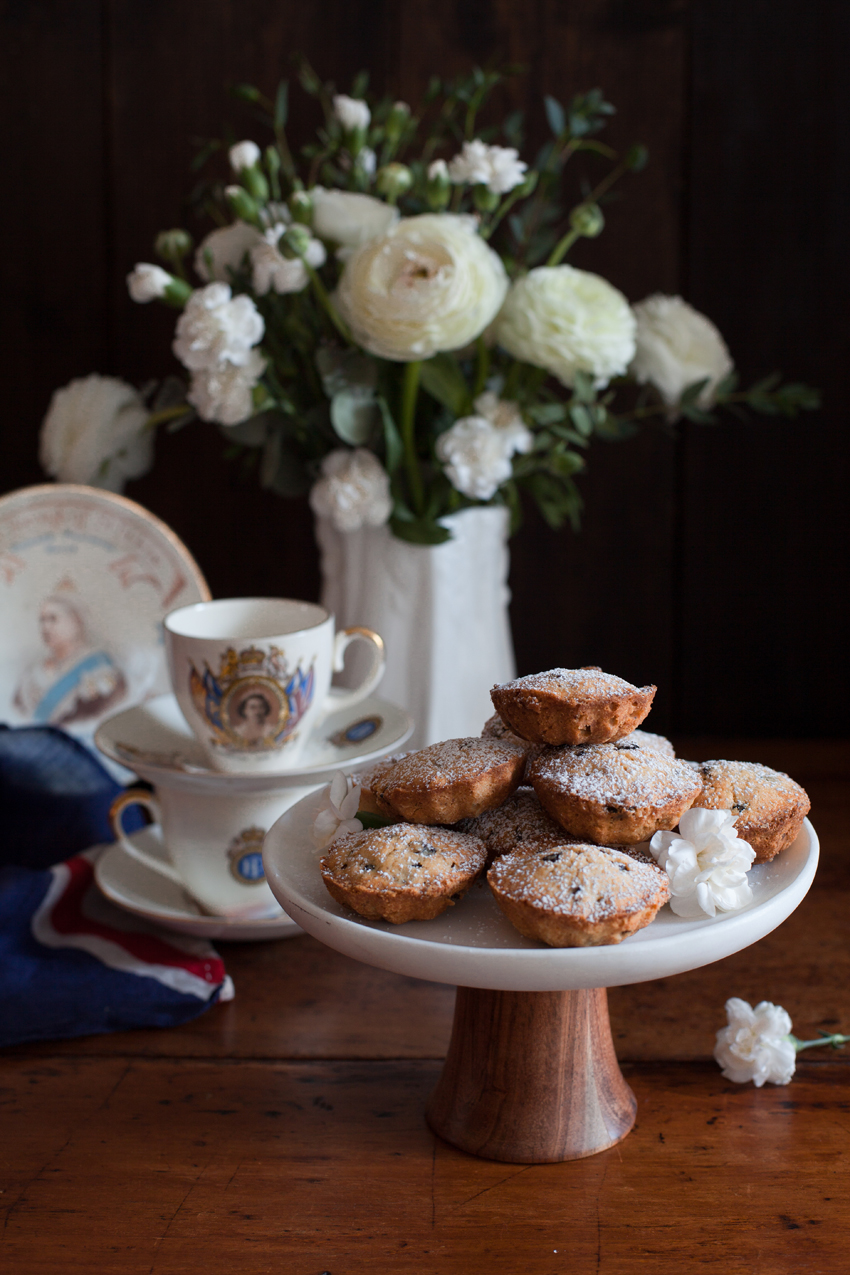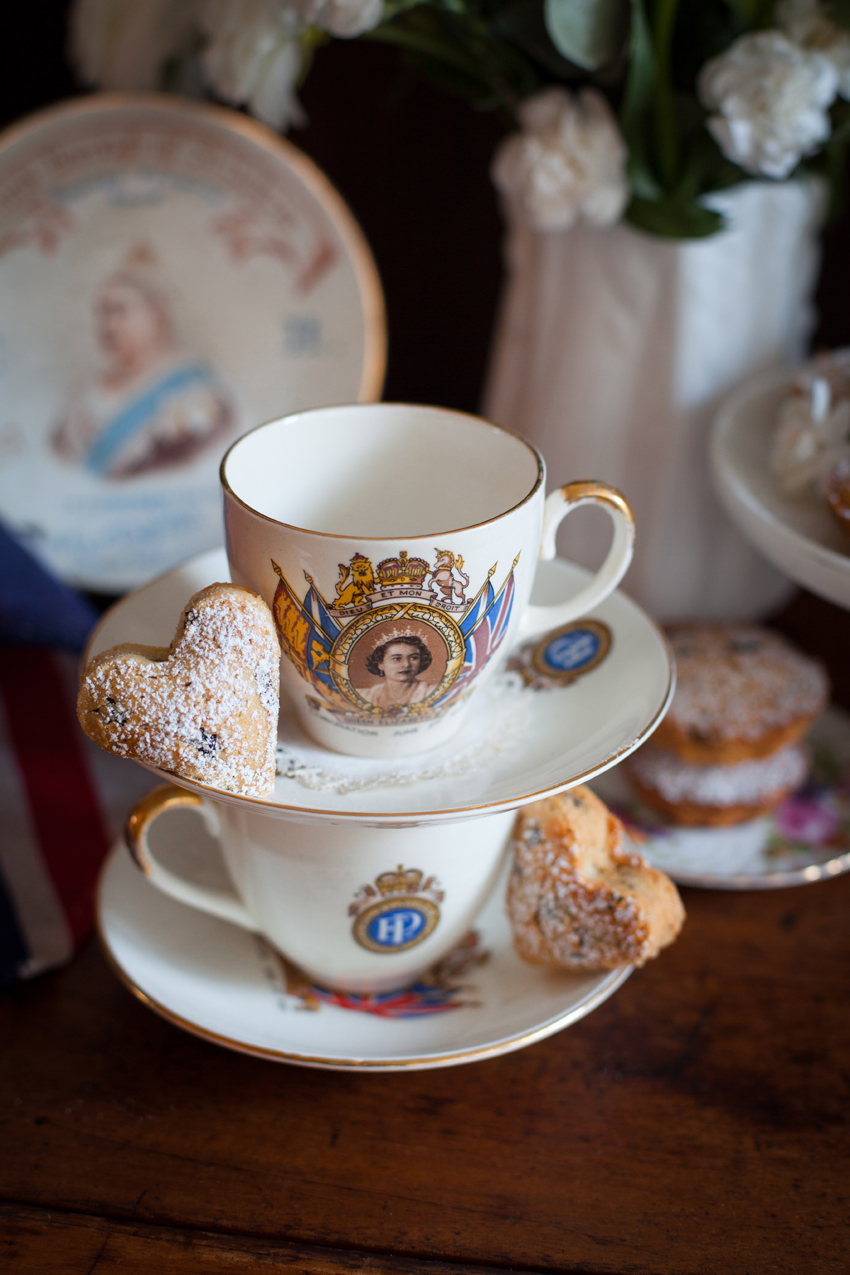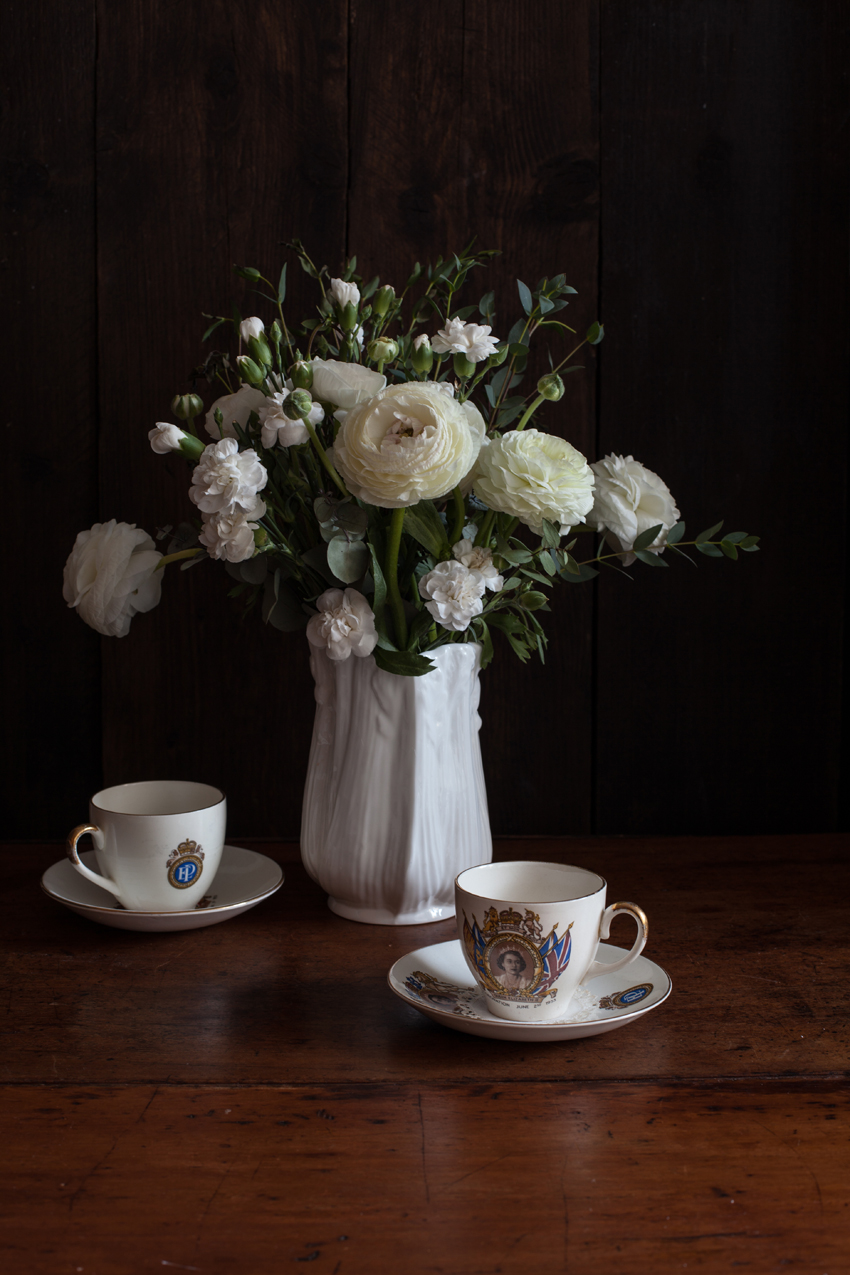The post Jaune Mange appeared first on Miss Foodwise.
]]>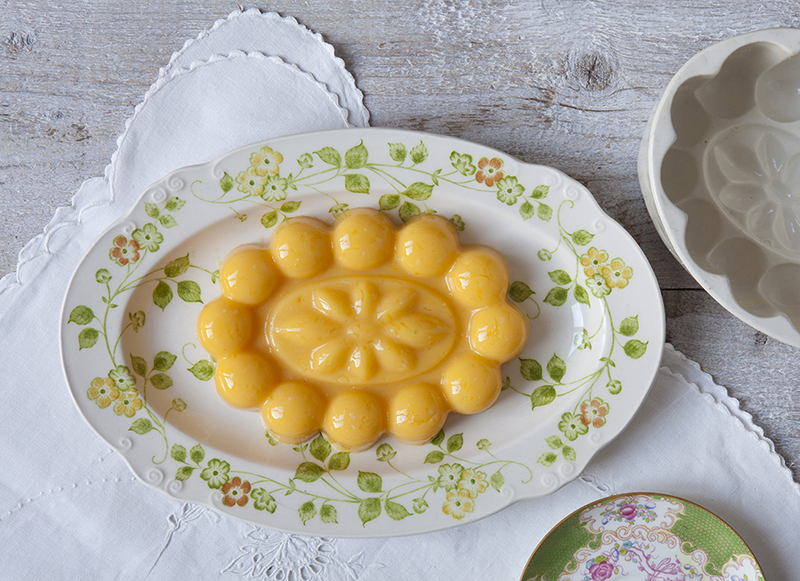 Jaune Mange jelly is the yellow sister to the ancient delicacy called Blanc Mange which means ‘white food’. It is one of the most international early dishes of European cuisine. From the Middle Ages onwards the name of this dish in its various forms – blanc mange, blanc manger, blamange, manjar branco, biancomangiare – can be found in most European cookery books.
Jaune Mange jelly is the yellow sister to the ancient delicacy called Blanc Mange which means ‘white food’. It is one of the most international early dishes of European cuisine. From the Middle Ages onwards the name of this dish in its various forms – blanc mange, blanc manger, blamange, manjar branco, biancomangiare – can be found in most European cookery books.
It is believed by many food historians that the earliest recipe for blancmange dates back to the twelfth century. Two recipes for blancmange also feature in the earliest English cookery text, The Forme of Cury from C1390. By 1395, two recipes for blancmange can be found in the Viandier manuscripts, the first French cookbook: one is a dish for the sick, the other is a multicoloured dish, which is at odds with the name’s literal meaning.
This recipe uses seville orange juice, while others recommend lemon and lemon peel for flavour and colour. Later recipes by J.H. Walsh in The British Cookery Book (1864) instruct the cook to use sherry or ‘raisin-wine’. Because the eggs give this jaune mange a set already, you don’t need to use as much gelatine as you would for a blancmange.`
Jaune Mange
Boil one ounce of isinglass three quarters of a pint of water, till melted, strain it; add the juice of two Seville oranges, a quarter of a pint of white wine, the yolks of four eggs, beaten and strained, sugar to the taste; stir it over a gentle fire till it just boils up; when cold put it into a mould or moulds; if there should be any sediment, take care not to pour it in.
Charlotte Mason, The Lady’s Assistant, 1773
Makes enough for a fancy 400 ml (14 fl oz) mould
What do you need
- 220 ml (7. fl oz) white wine
- 1 teaspoon sugar
- 3 egg yolks
- 4 gelatine leaves
- juice of 2 seville oranges (or plain oranges, it will just be more sweet but not too sweet, don’t worry)
Method
In a small saucepan, bring the wine and sugar to a simmer. In a separate bowl, whisk the egg yolks. Soak the gelatine leaves in the orange juice until soft.
Begin whisking the warm wine mixture into the egg yolks, followed by the soaked gelatine and juice.
Allow to cool but not set, then pour into a mould that you have rinsed and not wiped dry and allow to set for 6 hours or overnight. The smaller the mould, the shorter the setting time.
To unmould, wet one of your hands and use it to loosen the jelly. Allow the jelly to slide out onto a wet plate (if the plate is wet, you can easily move the jelly around if necessary).
From my book ‘Pride and Pudding – the history of British puddings, savoury and sweet’ (Murdoch Books)
Happy new year!
The post Jaune Mange appeared first on Miss Foodwise.
]]>The post How to make Quince Cheese appeared first on Miss Foodwise.
]]>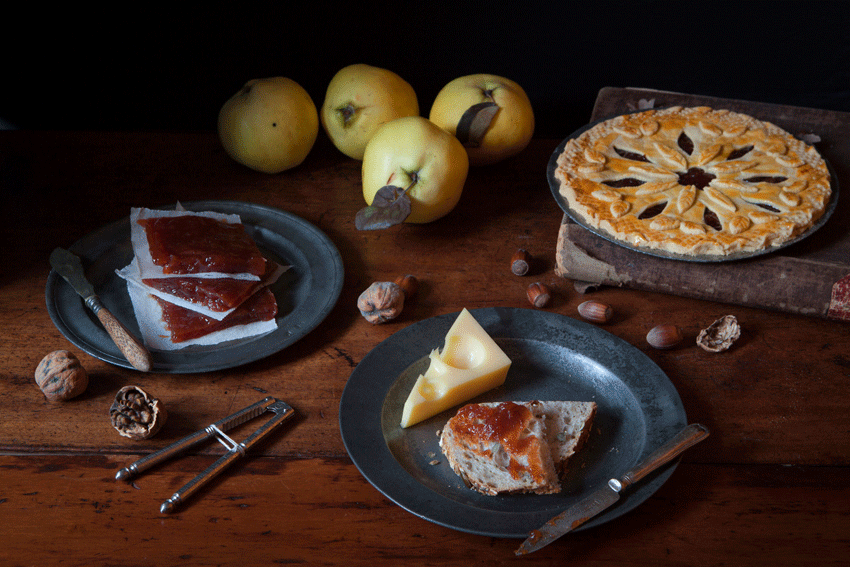 I’m not the biggest fan of sweet desserts after mains, I prefer an afternoon tea where the treats become the star of the show. That way you can enjoy them to the full and they do not become that thing you eat last when you’re actually too full to enjoy it. For an afternoon tea you can dress up, wear a hat, and pretend to be a lady of good breeding. Drinking tea with your pinky in the air, back straight, having polite conversations and enjoying the experience of eating from fine bone china. I’m also a sucker for a multi-tiered cake stand, and for clotted cream – lots of it.
I’m not the biggest fan of sweet desserts after mains, I prefer an afternoon tea where the treats become the star of the show. That way you can enjoy them to the full and they do not become that thing you eat last when you’re actually too full to enjoy it. For an afternoon tea you can dress up, wear a hat, and pretend to be a lady of good breeding. Drinking tea with your pinky in the air, back straight, having polite conversations and enjoying the experience of eating from fine bone china. I’m also a sucker for a multi-tiered cake stand, and for clotted cream – lots of it.Cheese and biscuits are my choice of afters and with a decent fruit cheese and port this quickly becomes my perfect kind of dessert.
Fruit cheeses are reduced jams or pastes. Centuries ago they were served after dinner as a digestive and they were often prescribed by apothecaries to cure minor ailments. The fruit paste was often pressed in a mould with fancy engravings and could look rather stunning. Moulds of this sort are rare to come by, I only know one person who has a mould and I believe he even carved it himself.
Although fruit cheeses should be thick and hold their shape, they should still be spreadable. You can make them into small cake trays for a nice shape or just in a large tray, you can then cut squares of the fruit cheese to wrap them and keep them. They are the most delectable accompaniment to blue cheese, but they can also be eaten all on their own, as a sweetie. A nice idea if you want to know what your child puts in its mouth, factory made sweets can contain all sorts of horrible additives. But it’s still sugar, make no mistake, to call it healthy would be wrong, but eaten and treated as a treat it is just fine.
My favourite fruit cheese is made of Quince. Quince are usually cooked and conserved. They look like otherworldly lanterns, large yellow pears with a strange downy covering. Raw they are considered quite unpalatable because of their tartness, but they are high in pectin which makes them ideal for making jams, jellies and fruit cheese. The pectin is most strong in the pips of the fruit, often ground up pips would be used to set other jelly like creations. But this is something I would not recommend you do as the seeds contain nitriles which turns poisonous when it comes in contact with your guts enzymes and acid. A few pips from your batch of quince are fine, just don’t chuck in a jar of ground up pips.
Quince and quince cheese was popular all over Europe since Medieval times. In Spain they call it ‘Membrillo’, in Italy ‘cotognata’ from the Italian word for quince ‘mele cotogne’ quince apple, the French call it ‘cotignac’ or ‘paté de coing’ from the French ‘coing’ for quince. Quinces are responsible for the word marmalade as their Portuguese word is ‘marmelo’ and they were made into fruit cheeses named marmalades.
Not only quince are used, every type of plum works great too. The Spanish love it with Manchego cheese, others prefer it with sweet cheese curds, but I prefer a good blue cheese like Stilton – the king of blue cheese, Shropshire Blue or Devon Blue.
Recipes for fruit cheeses are plentiful in historical cookery books. It was common to add red sandalwood or cochineal (a red colouring made from the cochineal beatle) to food to enhance the colour. Cochineal, also known as Carmine, was particularly popular in the Georgian and Victorian era but also in Tudor times the colouring of food was a very common practice in the kitchens of the King.
Cochineal wasn’t only used to colour food, it was also used as a textile dye and more recent to give make-up like red lipstick its beautiful red and pink colour. (Since I’ve been wearing red lipstick for half my life I’ve probably eaten quite a few of these little cochineal bugs). I have a small batch of the dried beetles sitting in a jar in my kitchen now, ready for making cochineal. I own a small Victorian Cochineal bottle and it is quite amazing to see the dye has not lost colour all these years. That must be the reason cochineal is considered the best red dye. In Italy the cochineal bugs are used to dye Alchermes, a liqueur popular in Tuscany and other regions. That liqueur is then used to dye food too, cake or lady fingers are often soaked in it. The Italian version of a Trifle, the ‘Zuppa Inglese’ is made with sponge cakes or lady fingers soaked in Alchermes.
See below a period recipe from Mr. Borella, who was the head confectioner to the Spanish Ambassador in England around 1772. He also uses Cochineal to colour his quince cheese.
To make the paste of a fine red, bake the quinces in the oven a long while, then peel and sift them in a strong hair-sieve; dry the marmalade over a slow fire a little while, to about half the consistency of a paste then to redden it the more, keep it a good while on a slow ashes-fire, stirring some time; and to add to this redness, put a little steeped cochineal, and reduce it on a flow fire, to a thick paste; that is, when it loosens from the Pan; put as much sugar as marmalade, or paste, soak it a little while on the fire and let it cool, just enough to work it well with the hands, and finish directly as usual.
Mr. Borella, The Court and Country Confectioner, 1770
The recipe below can be used two ways. You either jar the jam before it goes into the oven to dry and use it as a filling for pies (see the next posting), or you place it into the oven so it becomes fruit cheese.
The trick to get a beautiful dark colour is to cook the quince and the jam slowly and for a long time. The peel I’m told is also adding to the reddish colour so I never peel the fruit.
Quince cheese
What do you need
- 3 large quinces, 600 g, roughly chopped (you can remove the core but I do not for the extra pectin the pips contain, just take off the black crowns)
- 1 cinnamon stick
- 2 cloves
- peel of 1 lemon
- raw cane sugar, equal amount to the pulp
Method
In a large saucepan cover the quinces with water and boil until tender with the spices. Remove the quinces from the saucepan and save the spices.
Blend to a puree with cores and all to get a good set using a stick blender. Measure the quince puree and add the same weight in sugar plus the spices you saved. Proceed as for making jam, being careful as quince jam tends to spit. A way around this is to not make the jam on a hob but first bring it to a boil and stir for 5 minutes, remove the spices, then transfer the pan covered in greaseproof paper into the oven at 160°C. Leave there for 45 minutes, then check on it, it should be thick and perfect for a pie filling.
Let the puree cool so it is cold enough to handle and strain through a sieve, pushing it through with a rubber spatula. Use for pies or jam or proceed to dry the make the fruit cheese by preheating your oven to 130°C if you haven’t already.
Transfer the jam to a shallow tray which you previously lined with greaseproof paper. You can make it as thick if you want but 1 cm is definitely the minimum. Let the paste dry until you feel it is becoming firm. There is no saying how long this will take exactly but it will be around an hour at least for sure.
When ready, leave to cool and then wrap in clean greaseproof paper. Place in an airtight container and it will keep for a few months. It might cristalise a little, but that doesn’t make it bad to eat.
You want it super red?
You might have a hard time finding the cochineal beetles but you can use all natural red beetroot powder!
This is nice as an edible gift to someone special!
You might also like
Damson cheese >
Quince Rataffia >
Quince tart Coming next week!
And check out Jul’s Kitchen roast quince with rice pudding here >
The post How to make Quince Cheese appeared first on Miss Foodwise.
]]>The post Queen cakes – 18th century dainty bakes appeared first on Miss Foodwise.
]]>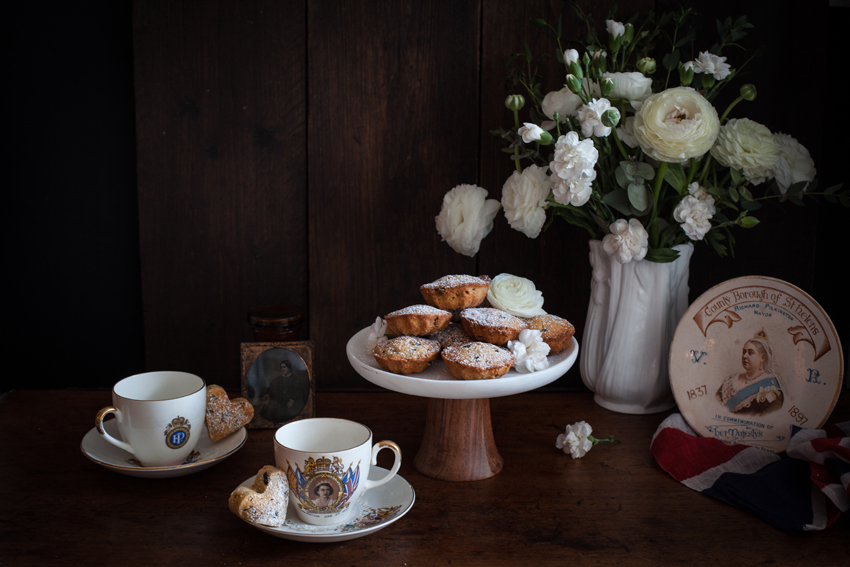
It is not a coincidence that I chose to write about Queen cakes today. If you’ve read the papers and watched the news, or if you are a royalist, then you know today the Queen of England celebrates her 90th birthday. This makes her the world’s oldest-reigning monarch and the longest reigning monarch in English history. Queen Victoria was the previous record holder with her 63 years and seven months. So Queenie has every reason to be smug and have a big party – which is a giant street picnic on the Mall (the strap of wide street in front of Buckingham palace) in june. Getting a ticket for it was near impossible to my regret, because this was a celebration I would have been happy to buy a new hat for, bunting I already have aplenty. So if you’re reading this Your Majesty… is there room for one more? I’ll throw in a book!
But let’s talk about these Queen cakes. They are little cakes, and they started popping up in English cookery books in the 18th century. When reading the several recipes from the 18th to the 20th century I have in original cookery books, they remind me of a little cake I grew up with in Belgium. However, the recipe was slightly different as the Belgian cakes were flavoured with a little vanilla or almond essence, while Queen cakes are flavoured with mace, orange flower water, rose water and lemon depending on the date of the recipe. The Belgian cakes also look more like Madeleines, but they both have currants in them and the use of vanilla or almond essence is of course a slightly more ‘modern’ way to flavour bakes.
As with many English dishes, the Queen cakes come with their own dedicated cake pans. These were produced in the 19th century and depictions of them can be found in at least two books that I know of, one I own. 18th century recipes remain silent about the tins they should be baked in, but it is very possible that the then fashionable mince pie tins would have been used, leaving them without a need to create new tins.
Buying dedicated cake tins was of course an investment, and if you weren’t going to bake Queen cakes every week, rather extravagant. Cookery book author Mrs Eliza Rundell (1806) suggests to use either little tins, patty pans, tea-cups or saucers to bake the batter in. She gives two similar recipes, one with rosewater and currants, another with grated lemon rind omitting the currants. She uses a pound each of butter, flour, sugar and currants to 4 modern eggs.
The earliest recipe appears to be that of Robert Smith (no not that fellar of The Cure) in 1724 in his ‘Court Cookery: or the Compleat English Cook’. He instructs to make his Queen’s Cakes with currants, washed, picked and rubbed clean, and flavourings which are a little Mace and orange flower water. He also uses a pound each of butter, flour, sugar and currants but about 5 modern eggs, omitting half the whites.
Take a Pound of dry’d Flower, a Pound of refin’d Sugar sifted, and a Pound of Currans wash’d, pick’d, and rubb’d clean, and a Pound of Butter wash’d very well, and rub it into the Flower and Sugar, with a little beaten Mace, and a little Orange-Flower Water; beat ten Eggs, but half the Whites, work it all well together with your Hands, and put in the Currans; sift over it double-refin’d Sugar, and put them immediately into a gentle Oven to bake.”
Court Cookery: or the Compleat English Cook, Robert Smith, 1724
Jumping to 1907 Frederick Vine gives an illustration (see book in picture above) of the Queen cake pans in his book ‘Saleable Shop Goods’. There are heart, clover, triangle, square, round and cutlet shapes. The recipe in this book uses a lot more flour (so less sugar) and only lemon essence, no currants in the batter, but he does instruct to sprinkle them on top of the cakes just before baking.
In the early 20th century recipes for Queen cakes aplenty with books often giving the option of 4 different recipes. Currants are back into the batter and several flavourings and toppings are suggested. It is quite possible that queen cakes were a term for all kinds of small cakes, much like fairy cakes or cupcakes. The recipe I’m giving you today are 18th century Queen cakes, recipe adapted (meaning recreated, I didn’t mess with it) from Robert Smith …
Some notes to the recipe
I find the cakes too sweet because they use an equal amount of sugar to butter and flour so I would definitely reduce this to 150 g. You can reduce the amount of currants to half, you will still have plenty of currants. Robert Smith suggests using your hands to mix everything, which I have done and worked much faster and better with the currants. Frederik Vine in his 19th century book tells us to use a palette knife to transfer the batter to the cake tins and I find that indeed using a small palette knife or blunt butter knife to do this works best. The original cake tins used for these looked a lot like cookie cutters with a base, but because the batter is so solid you can use cookie cutters placed on baking parchment (well buttered and dusted with flour of course) and fill these. In the past, cake tins or hoops didn’t always have a base. Finally, you could use self-raising flour if you want a lighter bake… this was done in the 19th century too.
What do you need – makes 20-22 cakes
- 250 g soft butter
- 250 g raw cane sugar
- 1/2 tsp ground mace (use mace blades bashed in a mortar, ready ground will give another result)
- 2 tsp orange flower water
- 250 g currants, soaked if you have the time
- 250 g flour
- 4 eggs, separated, of which one white discarded (nothing will go wrong if you leave it in)
Method
Prepare small cake tins, or cookie cutters about 5cm wide by generously buttering them and dusting them with flour.
Preheat your oven to 160°C
Cream butter and sugar as you would for regular pound cake. Now bash your mace blades in a mortar, I used two but any leftover can be kept in a jar for future use. Pour in the orange flower water and add the egg yolks one at a time.
Sift in the flour and mix well, the batter is quite dry for a cake batter so don’t be alarmed by this. When thoroughly combined, fold in the currants. I use my hands to combine the flour with the rest of the batter, you will soon see that this is indeed the best option and our 18th century writer is right (see note to the recipe above).
Whisk your egg whites until stiff, then fold into the batter with a spatula.
Use a palette knife to transfer batter to your cake tins, spreading it evenly.
Place in the middle of your preheated oven and bake for 30 minutes or untill golden brown. The cakes should have a dome from rising in the oven. When flat, they are tough.
Remove from the tins after 2 minutes and cool on a wire rack.
Finally, when cooled, dust with icing sugar and serve.
You Might also Enjoy
Francatelli’s Queen Victoria and Albert pudding >
The post Queen cakes – 18th century dainty bakes appeared first on Miss Foodwise.
]]>